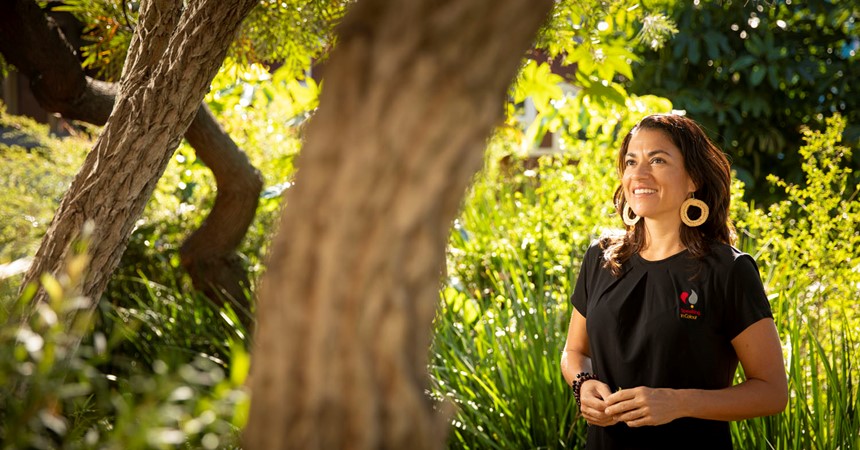However, for many Aboriginal and Torres Strait Islander Australians, kinship is a far greater, complex, loving, and embedded way of knowing, being, and doing. Kinship care is normal for Aboriginal families; family comes first always and it is tied to our Aboriginal ways.
I am a proud descendant of the Gamilaroi people. Daughter of Dawn Conlan, granddaughter of Rachel Darcy and great-granddaughter of Charlotte Wright. I am honoured to be part of my legacy. This is my identity. This is who I am – my kinship relationships.
As a child, I thrived in the care and love of many of my family. My mother’s sisters were all considered my mothers, and their children were my siblings. To spend entire school holidays with an aunty and weeks at a time with my nan are some of my most precious childhood memories. To be raised and loved in multi households was a simple pleasure. I was safe and felt secure.
Today, for many families and individuals, this is no longer the case. Many Aboriginal families have encountered the forced removal of children into an “other” due to the Protection Act 1909-1943. However, the forced number of removals has remained high long since then. This removal of children into homes, and the people from their lands onto reserves, was a form of genocide.
In 2008, I was moved to create an installation that includes an arrangement of ceramic coolamons representational of Indigenous children removed from their families. It is entitled Lest We Forget.
I selected the traditional symbol of the coolamon, as its use was varied, but is most recognisable for the purpose of carrying babies.
The number of coolamons used in the installation literally represents the documented statistics of those children who were removed, “nationally being one in three children”, as documented in the “Bringing Them Home” report.
As a result of the installation – its size, title and simplicity – the viewer is compelled to seek rationale.
Each coolamon or empty space is anonymous, like the children. Some spots are simply vacant, representing those children who could never find their way home. The broken coolamons are representative of the reality that is the multiplicity of socio-economic distress; that is, the reality of modern Aboriginal society.
The close kinship safety net – knowing and belonging – is now distant, removed, invisible, and a broken existence. These individuals are displaced.
The out-of-home care system has continued to lock many Aboriginal people into the removal process, when short-term and long-term solutions may otherwise have been a normal kinship relationship. The continued act of genocide has resulted in a loss of language and cultural knowledge, all impacting an individual’s cultural identity. This results in many feeling displaced and unable to speak of their descendants.
Aboriginal people do not have a concept of adoption – it is simply kinship care. The whole community is responsible for raising the children.
However, people are able to reclaim and reconnect with their ancestry. Culture is evolving, just as the Oxford dictionary adds new words each year, 2021 Aboriginal culture continues to evolve and is thriving.
So, what can we do to help families and individuals connect to their cultural practices and culture? Is it possible to reverse some of the damage?
At Speaking in Colour, we believe so. We consider it is every Australian child’s right to participate in and learn about cultural practices, especially Aboriginal children. It is of the utmost importance that schools provide these cultural opportunities for students as currently 25 per cent of the Aboriginal population in the Hunter/Lake Macquarie areas is aged between 5 and 14.
But what if you’re no longer in the education system? What can you do to gain a greater understanding of Aboriginal people and culture? Be an informed member of society and agent for change. Be aware of, and take part in, movements such as @Tradingblak, promoting Aboriginal products. Finally, diversify your viewing, reading and listening about Aboriginal people and culture to include Aboriginal authors, film makers and journalists who are speaking the truth.
Cherie Johnson is the founder of Speaking in Colour, formed in 2010 to provide professional development for educators. Speaking in Colour’s mission is to educate, equip and encourage businesses and educators to understand and embrace Aboriginal culture and share this knowledge with the youth of today. Speaking in Colour has a variety of resources available on their website www.speakingincolour.com.au as well as information about their school and workplace programs.






















































































